Offbeat Outings is a bi-monthly series that highlights the travels of BHP staff as they experience history first-hand throughout Pennsylvania.
Although I’m Pennsylvania born and raised, I’m the first to (sheepishly) admit that there are many counties within the Commonwealth where I have never stepped foot. So when the invitation arose under the guise of project and covenant review to visit Pike County in the far northeast reaches, I eagerly accepted and grabbed an able co-pilot, Karen Arnold, for what turned out to be a gorgeous day in April. (Disclaimer: the musings of one mere BHP staffer does not do these places justice –if you’ve never been, add them to your bucket list – they do not disappoint [unlike my writing skills]).
Our first stop – Grey Towers National Historic Site nestled in the Pocono Mountains, just on the outskirts of Milford, the Pike County seat.
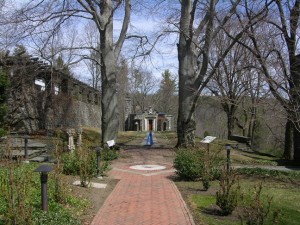
The Bait Box was constructed 1923-1926 first as a playhouse for Gifford Bryce and later served as a tea room for Cornelia; today it serves as meeting space.
A long drive stretches from Old Owego Road, off U.S. Route 6 to the stone mansion anchored by the three prominent towers for which the property is named. Upon arrival at Grey Towers, Karen and I were greeted by Ken Sandri, Historic Preservation Specialist and Tribal Liaison for the U.S. Forest Service, the agency that has owned and operated the property since 1963. Mr. Sandri took us on a whirlwind tour of the grounds and mansion as well as some of the associated buildings and features with names like Bait Box, Letter Box, and Finger Bowl. Today, visitors come to enjoy not only the mansion but the extensive landscape (complete with a moat!) and natural outdoor features that complement the historic built environment.
The Grey Towers mansion was constructed between 1884 and 1886, for James and Mary Pinchot. Based on the design of Richard Morris Hunt, the mansion pays homage to the French Chateaux, complete with a central bust of the Marquis de Lafayette, illustrating James’s pride in his French heritage. Upon James’ death in 1908, a portion of the estate, including the mansion, passed to the Pinchots’ oldest son, Gifford. Considered the father of the Conservation Movement, Gifford Pinchot was an outspoken advocate for scientific forestry and the need to control and manage the country’s natural resources. He founded and served as first chief of the U.S. Forest Service as well as many conservation-based organizations that exist today. He also served two terms as Governor of Pennsylvania from 1923-1927 and 1931-1935.
In 1963, Grey Towers was donated to the U.S. Forest Service by Gifford’s only son, Gifford Bryce Pinchot, to carry on the conservation legacy of his father. Designated a National Historic Landmark in 1963 and a National Historic Site (NHS) in 2004 (and consequently, the only NHS maintained by the Forest Service), the Forest Service works with numerous partners to carry on the Pinchot legacy by delivering public programs, interpretive tours, and conservation education programs as well as hosts conferences and seminars at the estate.
Many of the features visible at Grey Towers today were added by Gifford and his wife, Cornelia Bryce, after they married and moved to the property in 1914. Under their stewardship, the grounds around the mansion were extensively landscaped and reworked into an interrelated unit of indoor and outdoor living space. The most illustrative feature of this interrelationship is the Finger Bowl – which puts a whole new spin (pun intended) on the average lazy Susan. Built between 1932 and 1935, the Finger Bowl served as the outdoor dining table where family and guests sat around a raised, waist-high pool laden with food-filled wooden bowls and balsa rafts that were “floated” back and forth to each other. A flat ledge surrounds the pool and provided enough width to accommodate a place setting above with the chair underneath. (Note to self to return when the wisteria – which clings to an arbor hanging over the Finger Bowl – is in full bloom.)
Nearby to the Finger Bowl and mansion is the Letter Box, a building designed and constructed to store Gifford Pinchot’s papers (and a past recipient of a Save America’s Treasures grant). Used as an exhibit and educational space today, when daily correspondence usually takes place on hand-held devices and consists of acronyms and emoji, the Letter Box does give one pause to appreciate the written word. As an interesting aside, the building is also home to several artifacts associated with Napoleon Bonaparte – including a bronze statue commissioned by the family in 1866 as well as Napoleon’s pillow.
The Pinchots were not only stewards of the environment but were also philanthropists of Milford itself. One could create a scavenger hunt to find the numerous millstones that dot the estate in use as planters, tables, and benches. Purportedly, Cornelia offered up to $5 to anyone willing to bring a millstone to the estate as a means to provide work during the Great Depression.
The outdoor spaces are fully accessible to visitors, as is the majority of the interior of the mansion itself, which also does not disappoint. The interior is the perfect blend of stately refined opulence combined with the functionality of conference and office space. Arguably, the most interesting room is the very restrained quarters of Governor Pinchot himself – down to the single bed seemingly more apt for a camp counselor than a Pennsylvania Governor. Mansion tour season begins in May and extends through October 31; however, self-guided tours of the grounds are open year round as is the virtual tour that you can do from the comfort of your own home (however until smell-o-vision is invented, to do this site justice, you should plan to visit in person – ideally when all of the foliage is in full bloom or the leaves give way to their autumn colors).
But all too soon, we bid adieu to Grey Towers and headed into the National Register-listed Milford Historic District. We enjoyed (and highly recommend) lunch at Bar Louie housed in the basement of the National Register-listed Hotel Fauchere, constructed in 1880 and listed individually in the National Register. To this day, the building continues to serve as a hotel and restaurant (and notably a Federal Historic Preservation Tax Credit Project).
After lunch, we preceded to the final stop on our Pike County adventure– the Zane Grey Museum in Lackawaxen. A picturesque 30 minute drive took us from Milford through Lackawaxen to Scenic Drive, aptly named as we found ourselves driving past Roebling’s Delaware Aqueduct, a National Historic Landmark suspension bridge that still carries vehicle and foot traffic between Pennsylvania and New York. The Zane Grey Museum is located at 135 Scenic Drive, just south of the confluence of the Lackawaxen and Delaware rivers. From 1905 (the time of its initial construction) until 1918, the simple yet expansive frame house served as the home of Zane Grey, considered by many as the “Father of the Western Novel.” The house today holds an array of artifacts from the various facets of Grey’s life, including his early occupations as a dentist and semi-pro baseball player. Grey reached the height of his popularity as an American author between 1919 and 1928, on the heels of his published works that included Heritage of the Desert (1910), Riders of the Purple Sage (1912), Desert Gold (1913), and The U.P. Trail (1917), among 84 others credited to his name and published either as complete novels or as part of magazine series (at the height of his popularity, the novels of Zane Grey were the third best sellers in the country, after the Bible and McGuffey’s Readers). From 1905 to 1918, Zane Grey composed over a dozen of his most popular novels from the north wing of this Lackawaxen house, surrounded by memorabilia from his trips out West, some of which continue to adorn the walls of the museum today.
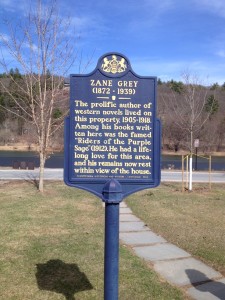 In 1989, the house as well as an extensive array of Grey’s memorabilia was acquired by the National Park Service, who continues to own and operate the property today. Several of the rooms are open to the public on the first floor, with office spaces for the Upper Delaware Scenic and Recreational River housed throughout. Visitors can also walk a short distance from the museum to Union Cemetery, where Zane Grey was buried upon his death in 1939, followed 18 years later by his wife, Lina Elise “Dolly” Roth. Today, the museum is open to the public from Memorial Day Weekend through Labor Day weekend.
In 1989, the house as well as an extensive array of Grey’s memorabilia was acquired by the National Park Service, who continues to own and operate the property today. Several of the rooms are open to the public on the first floor, with office spaces for the Upper Delaware Scenic and Recreational River housed throughout. Visitors can also walk a short distance from the museum to Union Cemetery, where Zane Grey was buried upon his death in 1939, followed 18 years later by his wife, Lina Elise “Dolly” Roth. Today, the museum is open to the public from Memorial Day Weekend through Labor Day weekend.
So with the summer holiday season fast approaching, perhaps you can find time in those busy schedules to take your own trip through Pike County and find inspiration strolling the grounds of Grey Towers or among the literary artifacts at the Zane Grey (or enjoying the fabulous fare at the Hotel Fauchere) to do some blogging or (LOL) some old-fashioned letter writing of your own – B4N!

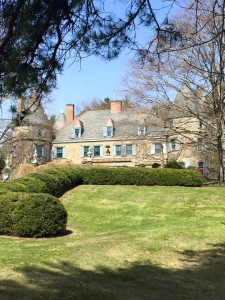
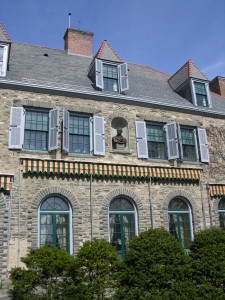
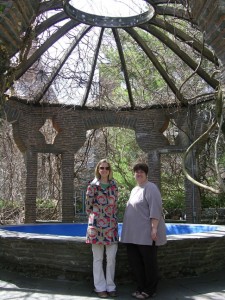
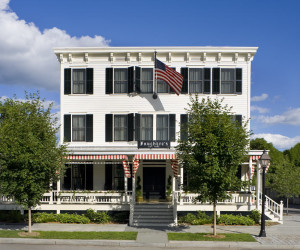
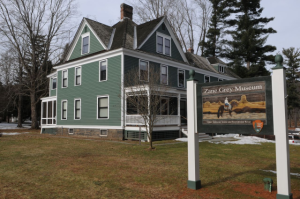
Leave a Reply